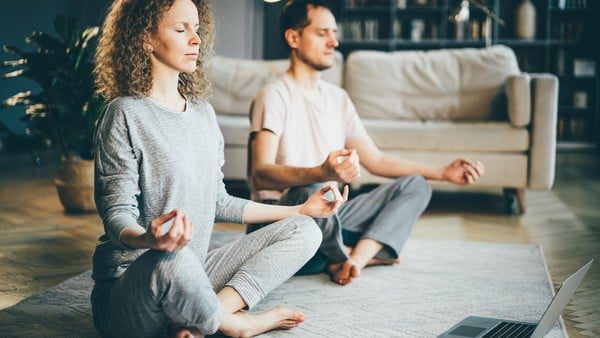Global Courant 2023-05-11 10:01:51
Discipline born in India more than 5 thousand years ago, it became a practice of awareness and relaxation in the world.
This practice was born to better understand sacred and mystical issues, and many people consider it a powerful tool to achieve relaxation and reduce stress.
Meditation can produce a state of deep relaxation. It is even listed as a complementary medicine for the mind and body. Because, by meditating, a person focuses their attention and eliminates confusing thoughts that are often the real source of stress.
Of course, in order to meditate it is not necessary to become a Buddhist monk. Just follow a few simple steps to achieve, in the comfort of home, a relaxation that will help you to be more focused, to be more creative and to react differently to everyday problems.
5 steps to learn to meditate at home
5 steps to learn to meditate at home./ Photo: Shutterstock.
The Mayo Clinic, from the United States, highlights some of the many benefits of meditation. For example, gaining a new perspective on stressful situations and acquiring stress management skills; increase self-awareness; focus on the present; reduce negative emotions; increase creativity, patience and tolerance; lower heart rate and blood pressure at rest and even improve the quality of sleep.
Actually, there are several ways to reach a state of relaxation. Meditation can be guided, transcendental (silent repetition of a word or phrase known as a mantra) and full attention or mindfulness (consists of being attentive or having a greater awareness and acceptance of living in the present moment).
The most outstanding steps of meditation are, according to professor Cristina Herrero, from the Gaia digital platform, the following:
1. The place
5 steps to learn to meditate at home. The tranquility of the place and the position are key./ Photo Shutterstock.
You have to find a quiet place to be able to meditate without interruptions for a little over half an hour. Meditation can be done on a cushion or a chair. But always in a quiet and comfortable place.
2. The posture
Sit with your back straight and your chest open so that your breath flows correctly. The lotus position is the most indicated. You have to close your eyes gently and support the tip of the tongue on the palate. Relax the face to adopt a kind gesture. The hands can rest on the legs to form the gesture of knowledge, with the index and thumb in contact and the rest of the fingers extended, with the palms of the hands facing up.
The key to the posture is to keep the body stable, and immobile, for about 20 to 40 minutes. As the body is a reflection of the mind, if it is in motion, so is the mind.
3. Breathing
It must be belly. To do this, you have to breathe in and out through your nose, relax your abdominal muscles and allow them to move to the rhythm of your breath. The person who meditates should not force the rhythm of the breath. This one will surely be slow and calm.
5 steps to learn to meditate at home. Conscious breathing, healthy eating, exercise promote well-being.
4. Attention
You must have your focus on a single point. With breathing as an ally, we must bring awareness to the sensations that will occur in the nostrils. The most important thing at this point is to feel and observe because it doesn’t matter what it is, it matters what it is. And when the person discovers that he has been carried away by a thought, he simply must return to the breath.
It should be clarified that it is not a question here of stopping thoughts (something almost impossible) or of putting the mind blank. Instead, you have to observe those thoughts that come and go, and become aware of them. From the digital platform Gaia, the streaming platform created to promote the global evolution of consciousness, affirm: “You are not the thoughts that go through your mind (…). You are the observer who has a thinking mind.”
5. Quiet the mind
5 steps to learn to meditate at home. The management of thoughts will serve us in all moments of life./ Photo Shutterstock.
The observation of mental processes will make brief spaces free of thoughts appear. Those who meditate will gradually make those spaces bigger and bigger. And although there will always be thoughts, attention will be trained to observe them from another perspective.
While these are the basic five steps, there are other options. For example, meditate while walking. From the Mayo Clinic they assure that it is an efficient and healthy way to relax. To do this, they advise walking slowly, concentrating on the movement of the legs, rather than on the destination. Direct attention to what is seen, heard and even smelled around.








